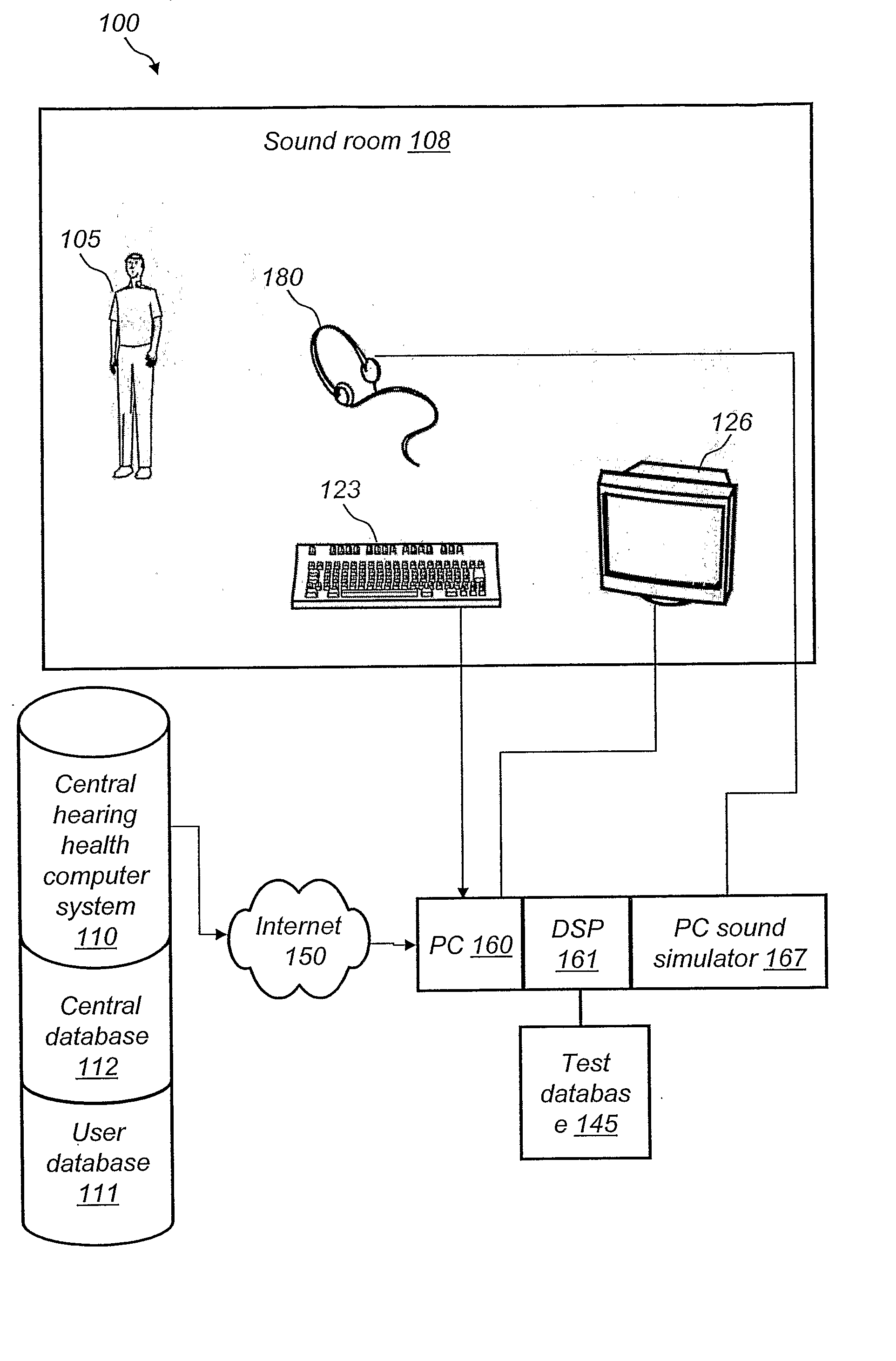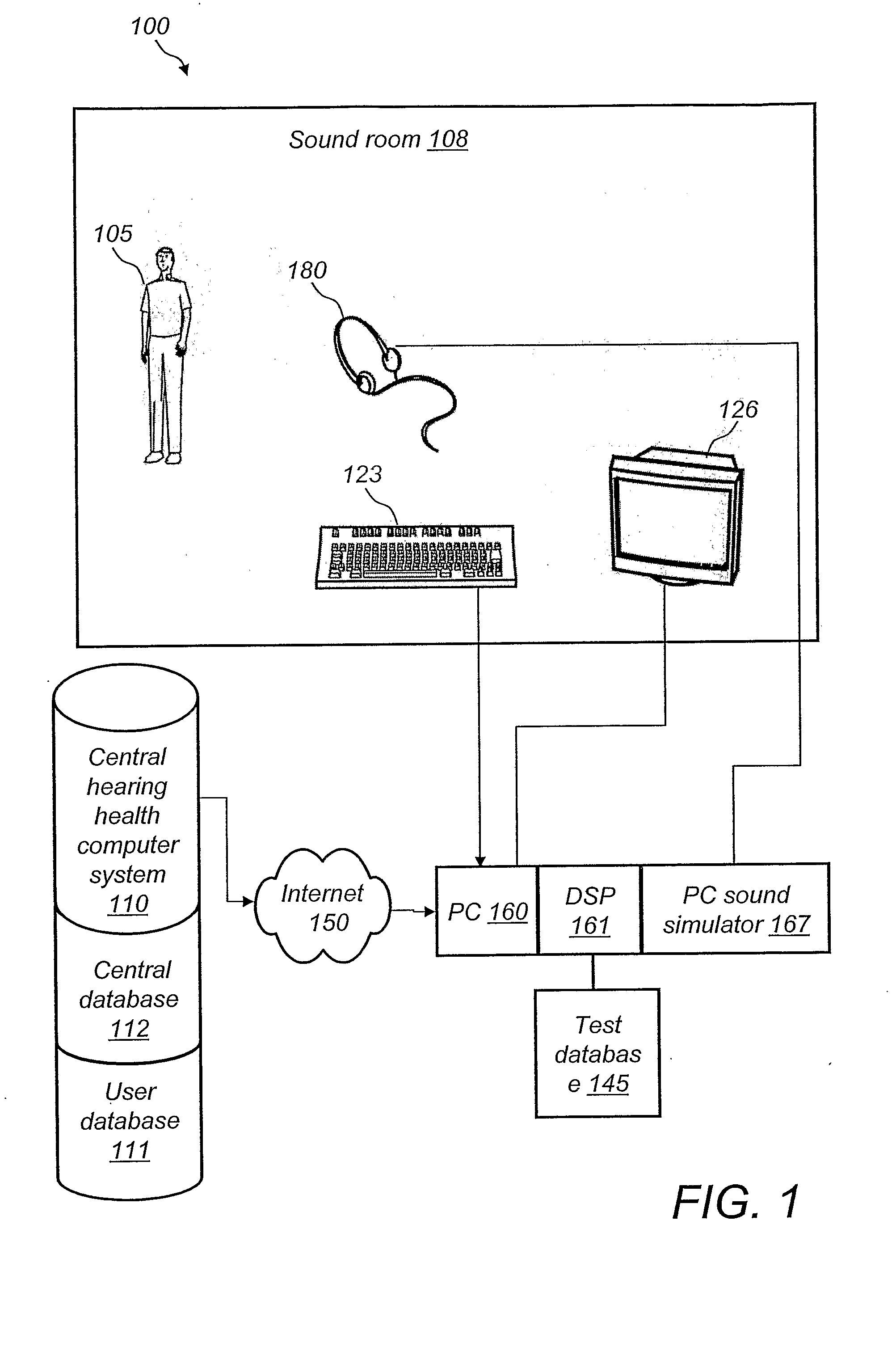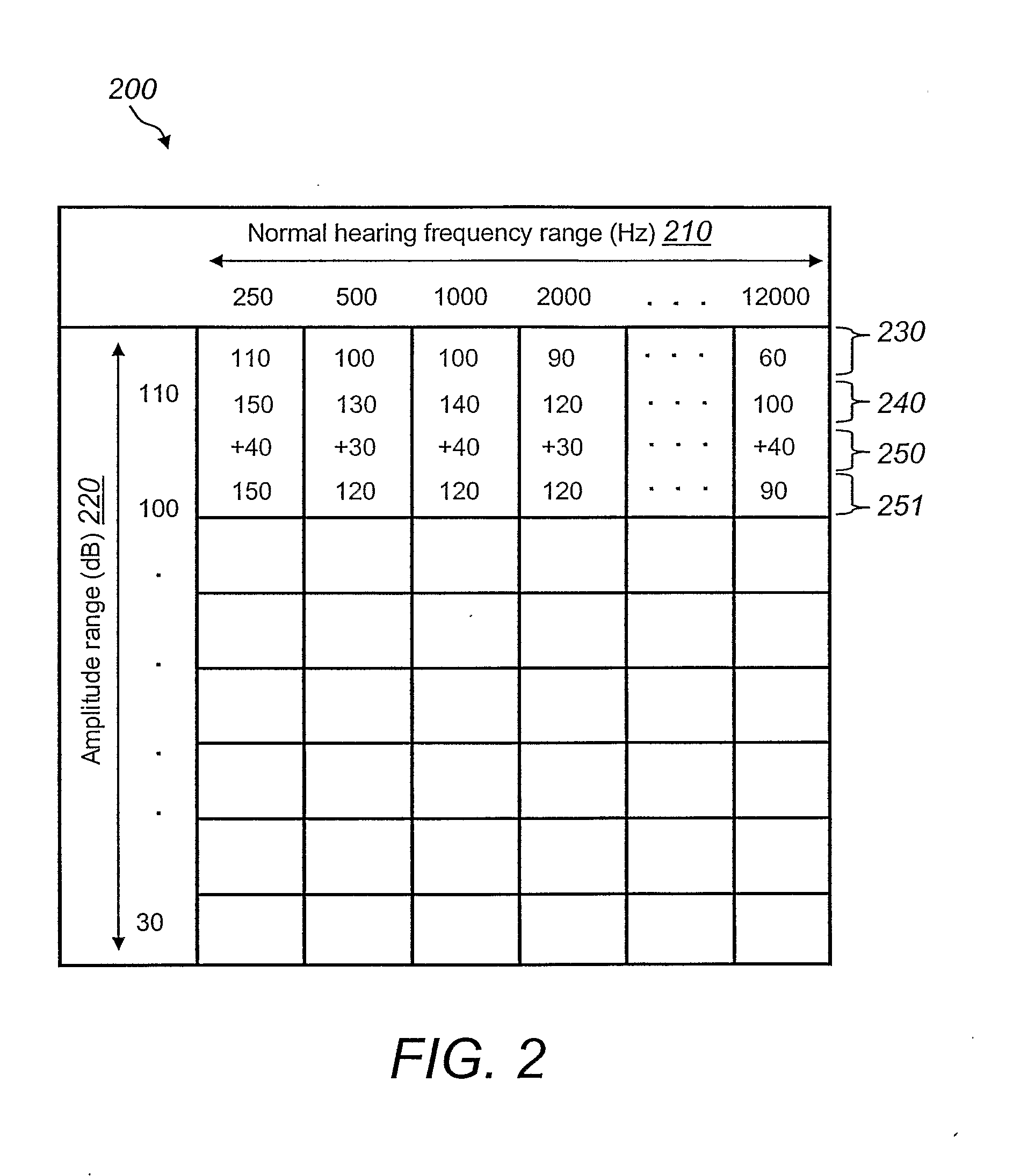Hearing Device Sound Simulation System and Method of Using the System
- Summary
- Abstract
- Description
- Claims
- Application Information
AI Technical Summary
Benefits of technology
Problems solved by technology
Method used
Image
Examples
Embodiment Construction
[0039]FIG. 1 is a system 100, consisting of a user 105, a sound room 108, a central hearing health computer system 110, a user database 111, a central database 112, a keyboard 123, a monitor 126, a pair of headphones 180, a test database 145, an Internet 150 connection, a personal computer (PC) 160, a PC sound simulator 167, and a digital signal processor (DSP) 161.
[0040]User 105 is the patient, who is wearing a pair of conventional headphones 180 in sound room 108. User 105 represents the individuals (mass market) on whom a hearing test is to be administered. This is generally any and all individuals, but more specifically, the more than 10% of the population (e.g., 25 million Americans) that have hearing loss, including one out of four people older than 65. Hearing loss may come from infections, strokes, head injuries, certain medicines, tumors, other medical problems, or an excess of earwax. It can also result from repeated exposure to very loud noise, such as music, power tools,...
PUM
 Login to View More
Login to View More Abstract
Description
Claims
Application Information
 Login to View More
Login to View More - R&D
- Intellectual Property
- Life Sciences
- Materials
- Tech Scout
- Unparalleled Data Quality
- Higher Quality Content
- 60% Fewer Hallucinations
Browse by: Latest US Patents, China's latest patents, Technical Efficacy Thesaurus, Application Domain, Technology Topic, Popular Technical Reports.
© 2025 PatSnap. All rights reserved.Legal|Privacy policy|Modern Slavery Act Transparency Statement|Sitemap|About US| Contact US: help@patsnap.com



